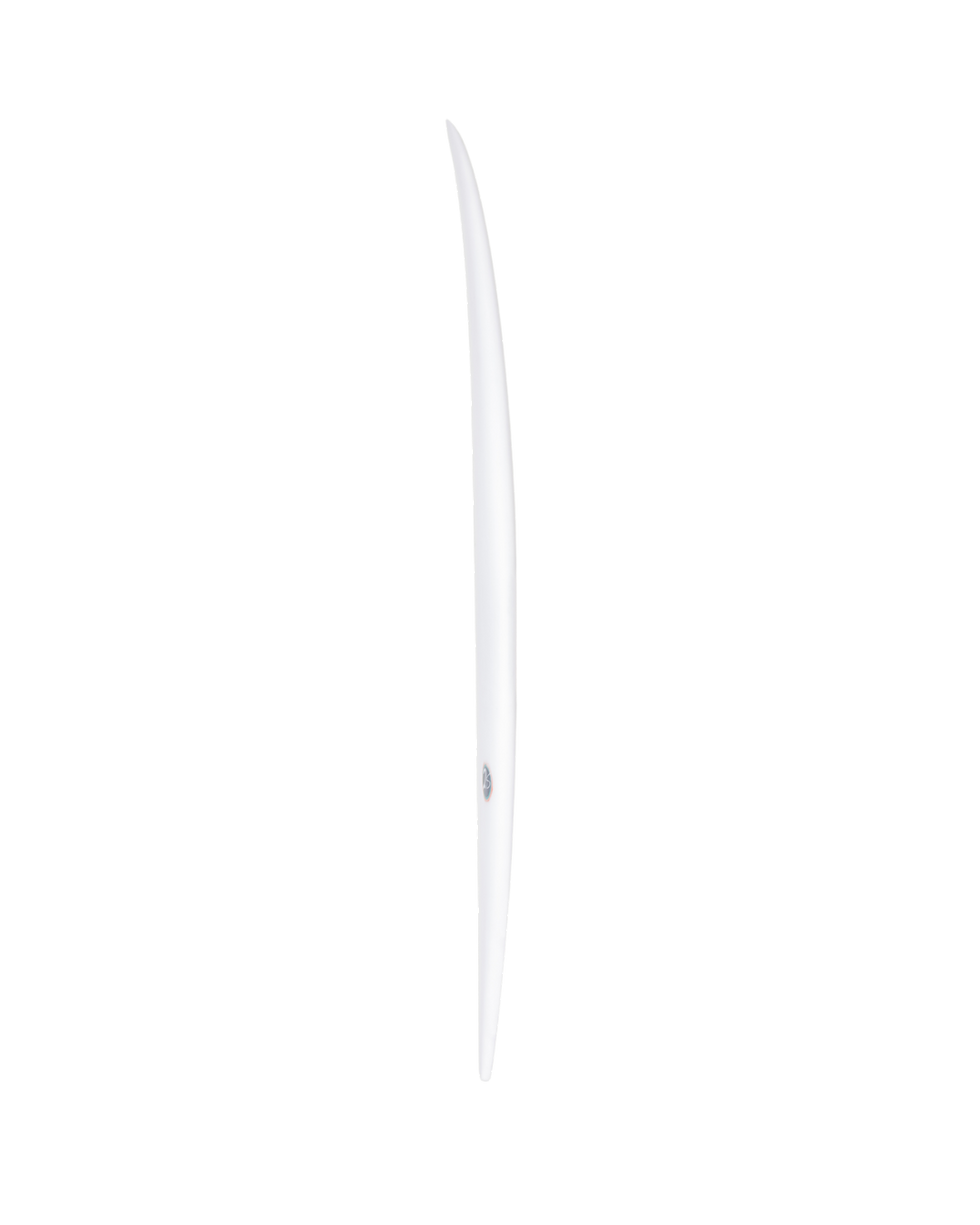



2S

STUBBIE
2S
In the 80´s, the former professional surfer Ricardo Martins, unhappy with some of his results and the judgement criteria at the time, decided to make some changes to his main competition board. It was necessary to extract more from those waves, to get space to make three, four turns.
The result was immediate, Ricardo made two consecutive finals in the OSP contests - Organization of Professional Surfers. This board would definitely change his view of high performance small wave boards.
What he did at the time was drop three inches from his usual board, change the rocker by making it straighter to generate a lot of speed, and increased the entire area of the board to get a better wave entry, fluctuation and stability. It also inserted double wings to reduce the tail area and make easier some tight turns. Wings were used a lot back then to break the lines.
Today the 2S is a reread of that experience. Designed for high performance in small and weak waves, its design resulted in an extremely compact board. We highlight the combination of a rocker with little curve and a bottom that includes a single entry, accentuated double concave and exit vbottom.
Another important point for the 2S´s performance in adverse conditions is the construction of an outline with plenty of nose and tail area. It was necessary to guarantee stability and on such a fast and small board. In other words, the turbo is activated when the surfer begins to paddle, you enter the wave faster than with a normal shortboard. The 2S, as it is a specific board for small and weak waves, achieves speed and space where an all around board cannot reach.
But for the 2S to function as a high performance board, it´s important to use 3 or 4 inches smaller than the everyday board, and increase the volume. The size can be defined directly depending on your surfing level. Therefore, the higher it is, the smaller the board should be. This equation should also be applied for surfers who are not in top physical shape, where the 2S should be used in the same size as the regular board.
Na década de 80, o então surfista profissional Ricardo Martins, insatisfeito com alguns de seus resultados e o critério de julgamento da época, resolveu fazer alterações em sua principal prancha de competição. Era preciso extrair mais daquelas ondas, conseguir espaço para fazer três, quatro manobras.
O resultado foi imediato, Ricardo fez duas finais consecutivas em campeonatos da OSP – Organização dos Surfistas Profissionais. Essa prancha mudaria definitivamente sua visão sobre pranchas de alta performance para ondas pequenas.
O que fez na época foi diminuir três polegadas em relação a sua a prancha habitual, alterou o rocker deixando-o mais reto para gerar bastante velocidade e aumentou toda a área da prancha para obter melhor entrada na onda, flutuação e estabilidade. Também inseriu double wings para diminuir a área no tail e facilitar curvas mais acentuadas. Wings eram muito utilizados naquela época para quebrar a linha.
A 2S de hoje é uma releitura dessa experiência. Projetada para alta performance em ondas pequenas e fracas, seu design resultou em uma prancha extremamente compacta. Destacamos a ousada combinação de um rocker com pouca curva a um fundo que contempla single de entrada, double concave acentuado e vbottom de saída. Outro ponto importante para a performance da 2S em condições adversas, foi a construção de um outline com bastante área de nose e tail. Era preciso garantir estabilidade e flutuação em uma prancha tão rápida e pequena. Em outras palavras, o turbo já é acionado na remada, entra-se antes na onda. A 2S, por se tratar de uma prancha especifica para ondas pequenas e fracas, consegue velocidade e espaço onde uma prancha all around não consegue chegar.
Mas para a 2S funcionar como uma prancha de alta performance é importante utilizar de 3 a 4 polegadas menor que a prancha do dia a dia, e aumentar o volume. O tamanho pode ser definido diretamente em função do seu nível de surf. Sendo assim, quanto mais alto for, menor deve ser a prancha. Essa equação também deve ser aplicada para surfistas que não estão na sua melhor forma, em que a 2S deve ser utilizada no mesmo tamanho da prancha básica do dia a dia.


